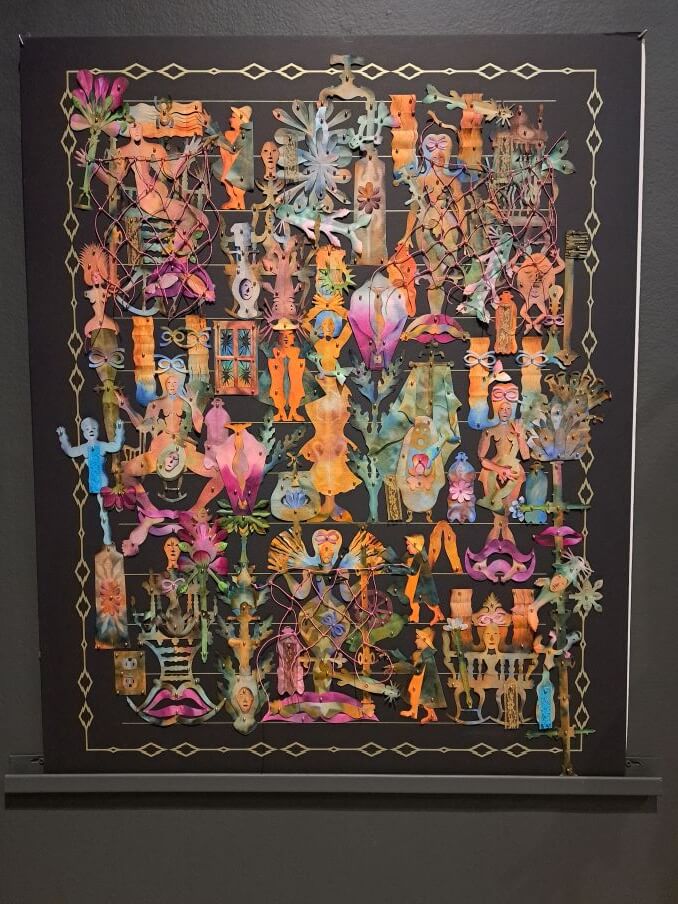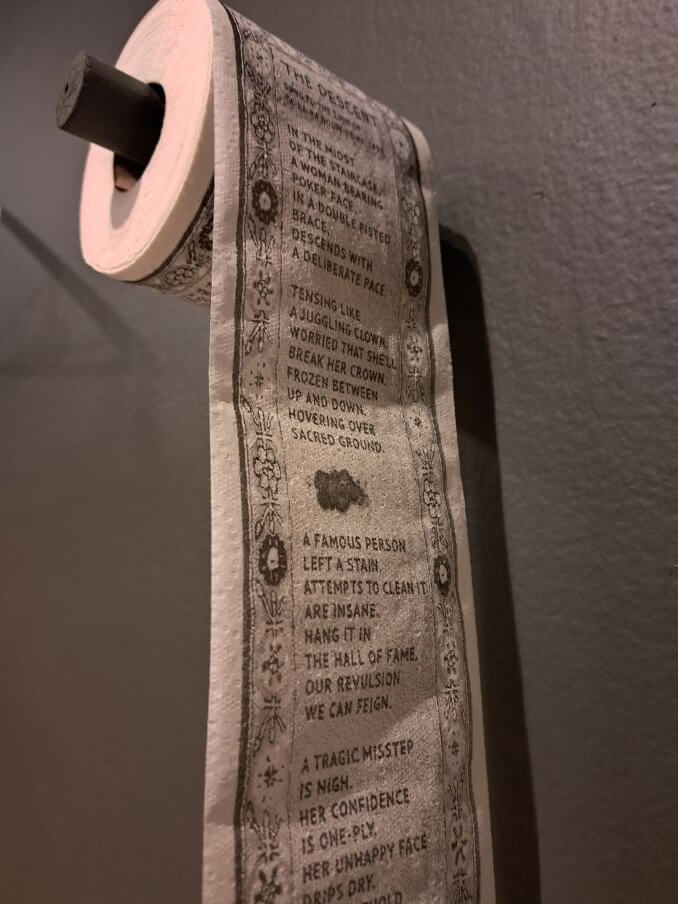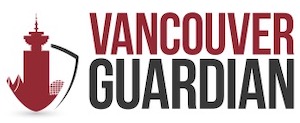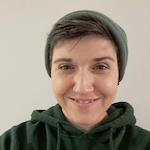Queer artists and storytellers Daniel Barrow, Glenn Gear, and Paige Gratland come together for their third collaborative project, Three Way Mirror, on display from December 2 to January 14 at grunt gallery. The artists have previously worked together at the Intergenerational LGBT Residency at Gibraltar Point, Toronto Island, and at Eastern Edge in St. John’s, Newfoundland. In Three Way Mirror, they explore themes of isolation and collaboration through weaving, digital prints, projection, and collage.
For two weeks leading up to the exhibit, the artists worked together collaboratively in the grunt space. There is a focus on crafting throughout, with pieces that incorporate elements of paper cutting, weaving, and beading.

The left wall of the gallery is almost entirely devoted to Gratland’s textiles. A weaver, visual artist, and filmmaker, Gratland’s pieces in the exhibit include woven fabrics, photographs, and dye-sublimation prints. “Pride for Introverts”, for example, is a long, suspended fabric that incorporates the colours of the Pride Progress Flag. “The Blues”, a series of nine dye-sublimation prints featuring close-up images of Gratland’s weaving, is accompanied by the fabric that visitors can touch and feel.
The tactile, interactive elements of this exhibit are what appealed to me most. Being able to touch the work encourages the viewer to be present and involved in the art in ways that are off-limits when one is merely a spectator.

Barrow, a genderfluid artist and storyteller from Montreal, uses the image of the paper doll as a means of exploring gender and childhood. In their colourful, detailed collages, “Mermaid Kite Bouquet” and “Mermaid Poem”, Barrow’s figures seem to dance and play. But they are also pinned down, like insects in an entomologist’s collection, suggesting a darkness and violence behind the vibrant colours and playful figures.
Gear’s digital prints and projection are displayed on the right wall of the grunt space. Gear’s prints, which incorporate images of animals and nature as well as beading and traditional Inuit art, reflect his Inuit and settler ancestry.
The work in Three Way Mirror is detailed, joyful, meditative, and occasionally irreverent — but without a clear unifying message, the exhibit feels underwhelming.

For example, Barrow’s community engagement project, “Mermaid Kites”, which was completed during the residency at grunt, is a mixed-media installation that features large paper silhouettes hanging from clothes hangers. Each silhouette is decorated with doodles and messages in sharpie. It suggests a reclamation of fashion and femininity. The paper resembles the kind used to make sewing patterns, and the arrangement is reminiscent of clothes hanging in a closet.
But the purpose of the project and who, besides Barrow, was involved is unclear. Some of the writing and drawing looks like it was done by children, but there was no information provided in the exhibit to indicate what members of the “community” were engaged and why. I was left wondering how this project was meant to fit in with the rest of the work in the exhibit.

Similarly, Gear’s series of digital prints, “Symmetry Series: The Elements”, features images of mandala-like designs with details resembling fur and beads. The work mirrors Gratland’s photographs, in the sense that both works attempt to capture textile and craft details through two-dimensional images. However, it wasn’t clear to me what Gear’s series was trying to say. There is potential for a thoughtful commentary on the commodification of Indigenous and queer crafting traditions, but whether that was Gear’s intention with these images is difficult to say.
Once again, I wanted a unifying message, an indication of what these artists hoped that their collaborative efforts would achieve. Still, Three Way Mirror is an intriguing celebration of queer community, creation, and collaboration.
Three Way Mirror runs from December 2 to January 14 at grunt gallery.

